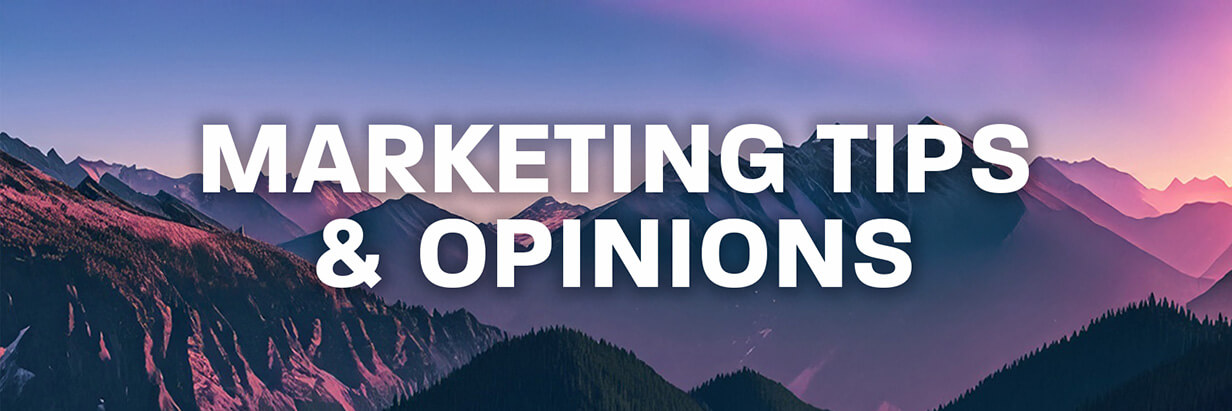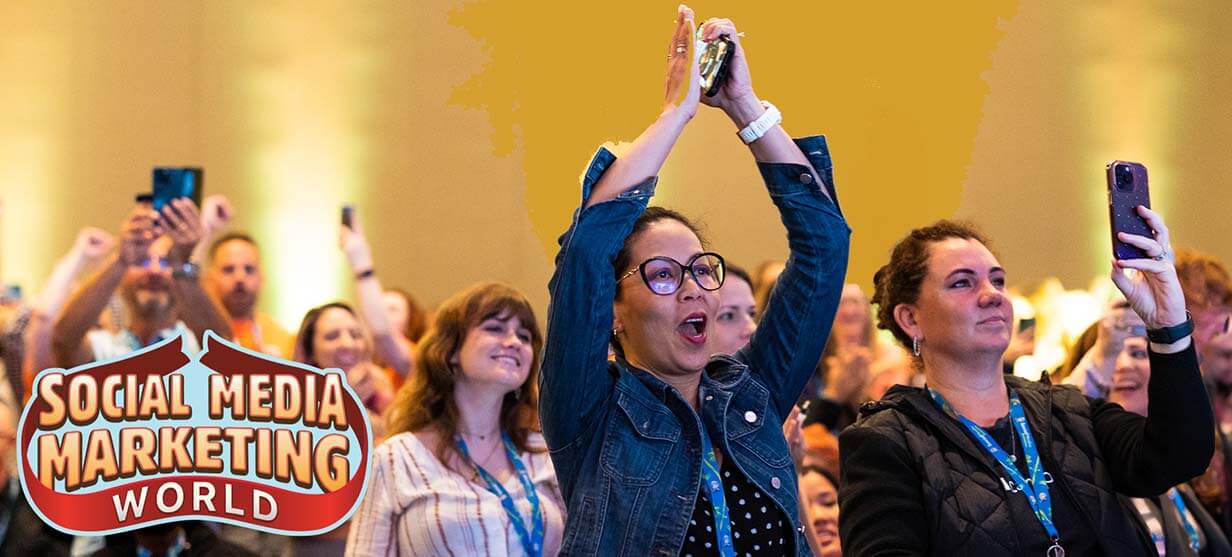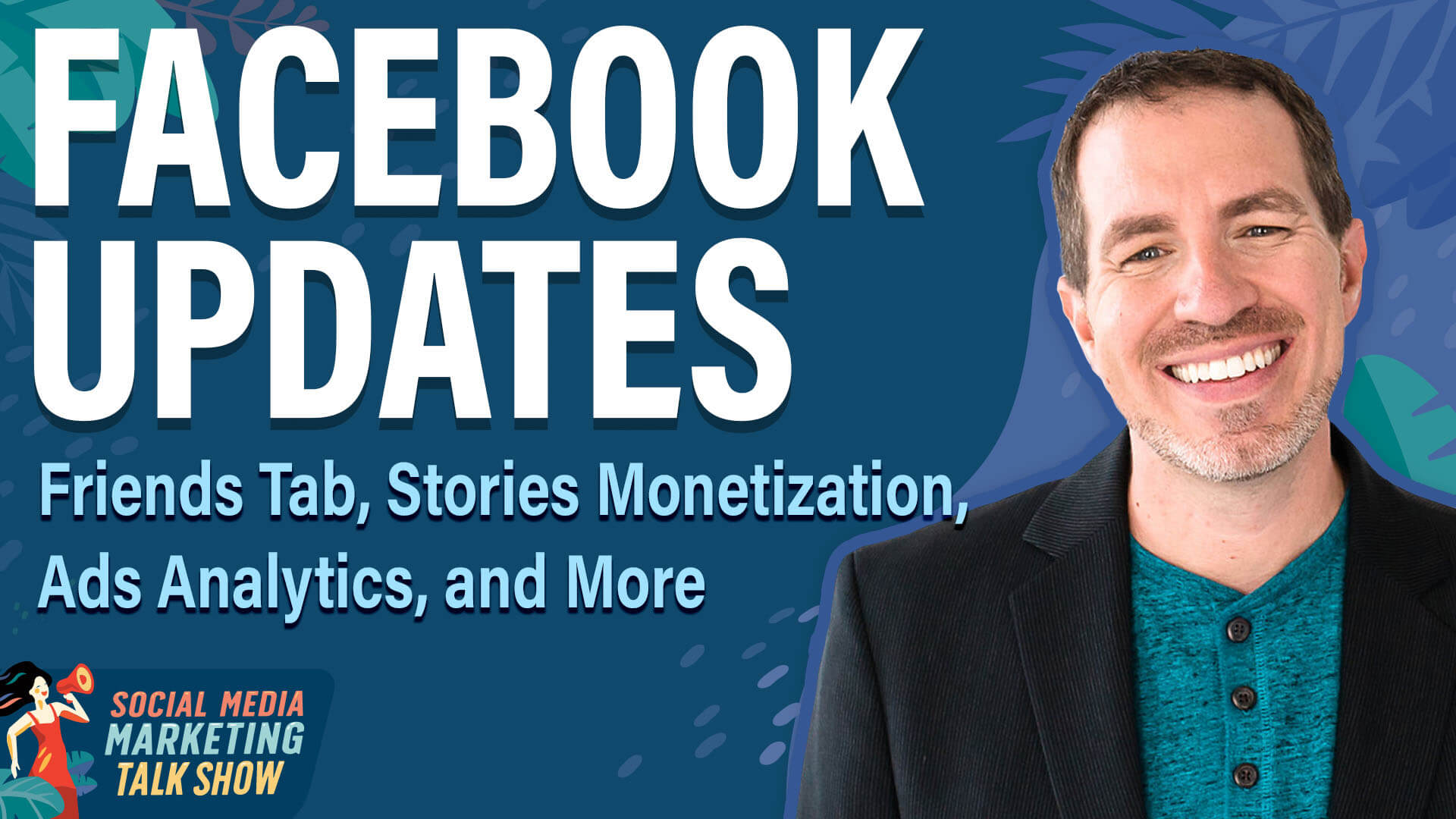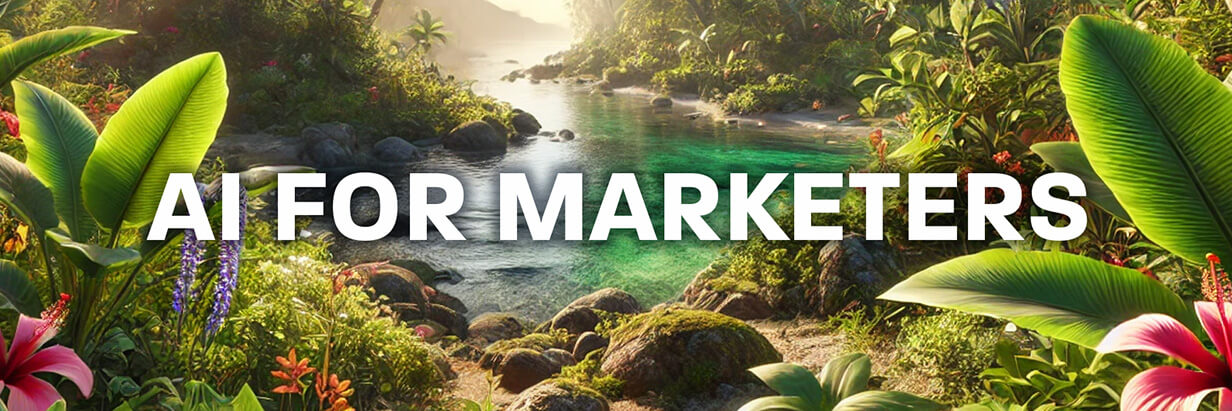Today's Guide to the Marketing Jungle from Social Media Examiner...
presented by 
The weekend is almost here, Alluser! Here's a recap of the most important insights, trends, and updates from the week. Catch up in minutes and go into next week prepared.
In today's edition:
-
Stop wasting Facebook ads spend
-
5 editing tricks for fancier videos
-
Tracking the engagement that turns into sales
-
Adding visual effects to Shorts, Reels, and more
-
AI headshots that really look like you
-
Facebook Updates: Friends tab, stories monetization, ads analytics, and more
-
A better way to clean up your AI prompts
-
AI Disclosure: The unexpected reason it matters
-
🗞️ Industry news from LinkedIn, Instagram, YouTube, and more

Stop Meta Ads From Reaching People Outside Your Target Location
Ever launched a perfectly targeted Meta ad campaign only to discover people commenting from nowhere near your target area? It happens.
In Jon Loomer's latest deep dive, he uncovers four reasons your carefully targeted ads might reach people outside your intended location.
From Meta's significant changes to location targeting options to the sneaky default settings you might have missed, Jon breaks down why this frustrating issue happens and what you can actually do about it. Read more here.
5 Pro-Level Video Editing Tips for Shorts, Reels, VoDs and More
Ever feel like your videos belong in amateur-land? You know how to cut clips together and maybe drop in some music, but something's missing.
This video breaks down the secret sauce Steve Wright uses to elevate his edits without spending days in front of a computer.
From the magic of overlays (imagine adding realistic rain or steam to your shots in seconds) to smart uses of stock footage that'll save you serious headaches.
A ridiculously simple keyboard shortcut trick will shave days off your editing time over the long run. Plus, learn how to create those impossible-looking shots where the camera seems to travel through solid objects or even inside someone's brain!
There's also an on-screen text solution that doesn't require becoming a graphic design wizard overnight.
These aren't just fancy tricks—they're practical time-savers that make your videos look exponentially better. Watch more here.
Are You Tracking Social Media Wrong?
If you're still counting likes, you're missing where the real magic happens. Most brands are playing checkers while the pros are playing chess—they're not just watching what customers say, but why they're saying it.
This is intent analysis, and it's transforming random social chatter into serious business outcomes.
How does it work? What do you track, and how do you analyze it? Brooke Sellas shares her 5-step process. Read more here.

Why Are These Marketers "Leaping" for Joy?
Because they experienced career-changing content from Social Media Marketing World 2025.
Isn't it your turn?
With your Virtual Ticket, you'll gain access to the recordings from all of the sessions, keynotes, and workshops. That's many hours of high-quality marketing training to help give your marketing a boost.
"I have absolutely found what I needed here. It's been a jam-packed three days. Every single session I attended I've been able to take away probably three things, minimum, that I am going to be able to immediately implement," said Jules McGuire.
I'm ready for a marketing boost.

Short-Form Video Visual Effects: The Key to More Views and Sales
Tired of your short-form videos getting lost in the feed? Are you ready to learn the secrets to using visual effects to maximize your impact on social media?
In this article, you'll discover actionable tips and expert advice on using visual effects to create high-impact short-form videos that generate more views and improve conversions.
With the average watch time on social media being just 1.7 seconds, you need something that immediately grabs attention. Often associated with long form videos, visual effects in short-form videos help you stop the scroll.
Visual effects create that moment of magic that makes viewers pause, compelling them to pay attention to your message. It's the ticket to breaking through the endless stream of content that users scroll through.
How to Use Visual Effects in Short-Form Videos
Start With a Solid Video Concept
While visual effects can grab attention, Tyler emphasizes that they're just the icing on the cake. The most common mistake is thinking you only need a cool visual hook.
However, the visual effect must support a strong concept with clear messaging that speaks to your audience's pain points or desired outcomes. Then, you can add visual effects to enhance that message.
"If you're a business owner or a brand, your job is to convey a message and make people aware of your services," Tyler Tometich reminds us. The visual effect is simply a tool to ensure people stop scrolling long enough to hear that message.
Choose Visual Effects to Enhance Your Video
So, what's the difference between visual effects and special effects? Special effects happen on set—live explosions, live smoke, or water effects. Visual effects are things that you add in post-production.
Think of Spider-Man-like webs, text, or graphics integrated into scenes—these are all examples of visual effects added after filming.
Tyler Tometich, a visual effects expert, recommends five main types of visual effect hooks to consider adding to your short-form marketing videos:
-
Visual Hooks: Something visually appealing or surprising that catches the eye
-
On-Screen Text Hooks: Text that appears on the screen providing context
-
Audio Hooks: Sound effects or trending music that captures attention
-
Verbal Hooks: Spoken words like "Are you struggling with how to grow online?"
-
Caption Hooks: The description written underneath the video
The most effective place to add visual effects is in the first two seconds of your video.
Many creators make the mistake of building up to a visual effect that appears 10-15 seconds into the video. By that point, most viewers have already scrolled past. The visual effect needs to grab attention right away so viewers stay to hear your message.
Here are some examples:
Realtors
Snap your fingers, and a set of keys will appear on the counter. Then, you pick up the keys and give a home tour.
Restaurants and Bars
Show a clean, empty plate on a table and then slam a napkin on the table to make the food appear. Or show a clean, empty plate on a table, wave your hand in front of the camera, and transition from the empty plate into a nicely plated meal. Or, Show an empty bartop. Use a sound effect with several strong beats dropping. Add a new cocktail or drink to the bartop as each beat drops.
Fashion Brands and Clothing Retailers
Use a quick-change effect. Show a person throwing a set of clothes up in the air and then transition to the person wearing the clothes.
For Fitness Coaches
Show clones of one person doing multiple things simultaneously to demonstrate multiple types of workouts in one scene.
How to Create a Simple Clone Effect
Creating a clone of yourself is one of the easiest and most effective visual effects. This technique allows you to show multiple versions of yourself in the same frame, which can be entertaining and effective for delivering your message.
First, set up your phone on a tripod with a fixed background, then film yourself facing in different directions (left, right, center).
Next, import the original video clips into CapCut or a similar app and then use the masking tool to combine the videos.
Tools for Creating Short-Form Video Visual Effects
The good news is that creating these effects doesn't require expensive equipment or extensive training.
If you're just getting started, Tyler recommends the CapCut app because it comes with powerful features, including:
-
Masking tools for combining videos
-
Background removal with one-click AI effects
-
Special effects like fire, smoke, or outlines around people
-
The ability to make objects fly around you automatically
For more advanced effects, Tyler recommends several footage resources:
-
ProductionCrate offers many free effects with a basic account.
-
ActionVFX offers high-quality visual effects assets used in the film industry.
-
MotionArray provides templates for creating motion graphics and various types of content.
Today's advice is provided with insights from Tyler Tometich, a featured guest on the Social Media Marketing Podcast.
Watch the full interview on YouTube
How to Create AI Headshots That Look Exactly Like You
Tired of using outdated or irrelevant headshots? Wondering how to create a mix of professional-quality headshots without hiring a photographer?
AI-generated headshots offer remarkable flexibility for anyone who needs custom images for social media, websites, and other marketing channels.
The cost is minimal and while early AI-generated images often looked artificial or cartoon-like, today's technology has dramatically improved. Though not every generated image will be perfect, you can usually get several usable, realistic images in just a few minutes.
This quick turnaround allows you to create context-specific images that match your marketing message more effectively than generic headshots.
Gather Your Training Images
To start, you'll need to gather at least a dozen photos of yourself to train the AI, but two dozen is better. These can be current headshots, candid photos, or selfies and should include a variety of photos with the following:
If you wear glasses or have distinctive features like Jonathan's white beard, include images that clearly show these characteristics.
For consistent results, make sure your face is clearly visible in all images and try to include shots with similar lighting conditions.
Use the highest resolution available (at least 1000px on the longest side) but try to keep each image under 10MB.
Access Flux
To help you access Flux through the developer, Black Forest Labs, Johnathan recommends going through the FAL platform. We created a shortcut redirect to get you there: socialmediaexaminer.com/lora.
When you arrive at FAL, click on the Sign Up button, then click on Continue with GitHub; if you don't have a GitHub account, you can easily create one for free as part of this workflow.
After creating your account, you'll need to add funds to pay for model training and image generation on Flux:
-
Navigate to Account, then Billing and Add Credits.
-
Add a payment method and fund your account with $10-20 to fund your image generation (each image costs about 3-5 cents, and training the model costs about $2).
-
Confirm your payment and wait for the funds to appear in your account; this usually happens immediately.
Once your account is funded, click on the Explore tab. In the search box, type "Flux-LORA-fast-training" and click on the model.
Train Your Custom Flux LoRA AI Model
Once in the Flux-LORA training model, look for the Input box to upload your collection of training images, either one at a time or as a zip file.
Next, choose a trigger word–a unique term that you'll use in prompts to tell the AI to use your likeness during new headshot generation. This should be a unique term not often used in your prompts. Jonathan uses his name, "JonathanMast."
Finally, click on Start to begin the training process, which takes about 10-15 minutes and costs about $2
When the training is complete, the model will appear in the training history box on the right side of the screen.
Use Your Flux LoRA AI Model
After your model is trained, you can start creating images.
Develop Your Image Prompt
Jonathan recommends using a custom GPT called Felix Image Prompter (available at socialmediaexaminer.com/felix) to help generate effective prompts for Flux.
Simply tell the custom GPT what type of image you want to create, and it will give you five image prompt iterations from which to choose. Be specific about facial expression, clothing, setting or background, sighting conditions, and camera angle or composition.
You'll also want to specify any distinctive features you want to appear in the image, such as "with glasses." Even if you're wearing glasses in all your training images, if you don't remind the AI that you want it to include glasses, about 80% of your images will generate with glasses, and about 20% won't.
Next, choose a prompt and include your trigger word where it makes logical sense, typically replacing references to a person.
Jonathan Mast with a long white beard and glasses, smiling confidently, wearing a navy blazer, standing in front of a red brick university building, soft natural lighting.
Generate New Headshots
Return to the Flux model, click Run Inference, and enter your prompt. Then, choose the desired aspect ratio.
Next, consider the Guidance Scale. Ranging from 0 to 35, this scale controls how much creative freedom the AI has when it generates an image. Set the scale too low, and the images will look less like you. Too high, and your images might look less realistic. For example, your skin may look plasticky. Jonathan recommends starting with a setting between 10 and 15 and experimenting to find the right balance between creativity and accuracy.
Then, choose the number of images you want to generate.
Finally, choose the output format.
The generation process takes about 30-60 seconds.
Today's advice provided with insights from Johnathan Mast, a featured guest on the AI Explored podcast.
Watch the full interview YouTube
Want to Save Time and Improve Your Marketing?
Almost a year ago, we launched a new show called AI Explored. It's a podcast for marketers, creators, and business owners who want to know how to use AI to improve their marketing—and to save A LOT of time in the process.
Each week, you'll discover how to apply AI in your work and life.
To listen, simply follow the show on your favorite podcast app.
Or visit our AI Explored show page today.

Discover Facebook's new AI-powered business tools, expanded monetization for Stories, and what the return of the Friends tabs means for marketers. We also cover how you can integrate Google data with your Meta ads analytics, and more.
Watch it on YouTube
Don't Answer AI Clarifying Questions in Chat (Do This Instead)
Ever been told to have ChatGPT ask you questions about your prompt? Turns out that's not a great workflow.
Nicole Leffer shares a smarter way to refine your prompt—one that prevents conversation confusion and dramatically improves your results!
Her approach works for all ChatGPT, Claude, and Gemini and keeps your conversation history clean and focused on what matters.
Want to level up your AI prompting game with this simple workflow tweak? Check out the full post for more details! Read more here.
Do You Need to Tell People When You're Using AI?
Does it really matter if you mention when you've used AI to create content? Christopher Penn breaks down three compelling reasons why disclosure isn't just a nice thing to do—it's necessary.
With the EU's recent passage of the AI Act (yep, it's official as of February), the disclosure trend is becoming law in some places. But there's more to it than just staying ahead of regulations.
Penn explains how transparency about AI usage isn't merely an ethical choice—it actually helps protect your original work.
Whether you're creating blog posts, images, or marketing materials, this quick read offers practical insights into why disclosure matters and how it might benefit you more than you think.
Disclosure isn't just about following rules—it's about protecting what's yours. Read more here.

Midjourney Releases Alpha Version of V7: The model has personalization turned on by default, requiring users to unlock this feature (taking approximately 5 minutes) before use, with the ability to toggle it on or off at any time. The announcement introduces Draft Mode as their next flagship feature, which costs half as much and renders images 10 times faster than standard mode. Some features, including upscaling, editing, and retexturing, will temporarily use V6 models, with updates planned for the future. Moodboards and SREF functionality will work with V7, with performance improvements expected in subsequent updates. The roadmap includes new features every week or two for the next 60 days, with a new V7 character and object reference identified as the most significant upcoming feature. V7 is launching in two modes, Turbo and Relax, with the standard speed mode requiring more optimization time before release. The pricing structure changes with V7, as Turbo jobs cost twice as much as normal V6 jobs, while Draft jobs cost half as much. Source: Midjourney
LinkedIn Tests Video Trends Highlights: Key videos are highlighted within the dedicated video tab and the video carousel in users' feeds. These trending topics will cover a diverse range of professional content, including workplace stories, industry news, and job and career tips. The platform is encouraging users to create and post videos related to these trends if they have relevant perspectives to share. Source: LinkedIn
Snapchat Expands Agency Partner Program: The program is currently available in the US and UK, with plans to expand to Saudi Arabia and the United Arab Emirates soon. The expanded program introduces a new tiered badging system with two levels: Strategic Agency Partner (an advanced tier for top-performing agency partners) and Agency Partner (designed for agencies with high growth potential). Snapchat is also launching a new Agency Partner Hub that provides exclusive resources, including training, certification, case studies, best practice guides, and insights to help agencies succeed with Snapchat Ads. Agencies that meet the badge requirements will receive benefits, including dedicated one-on-one support with strategic guidance, access to training resources, and special offers such as client coupons and opportunities to test new ad products. Qualified agencies will be showcased in Snapchat's Partner Directory, making them more discoverable to businesses looking for recognized Snapchat Ads experts. Source: Snap
TikTok Feature Updates: You can now mark viewers in your live streams when streaming with friends, making it easier to identify their likes, comments, and other interactions. The platform has also added an Add alternative text option within the photo post composer, giving users a straightforward way to include text descriptions for their still image uploads, which improves accessibility. Sources: @jonahmanzano and @oncescuradu via Threads
Instagram Tests Lockable Posts: The feature is being tested on Instagram's Design profile on mobile and desktop platforms. This new format prompts viewers to "Enter secret code" to view the hidden content. This feature is similar to the "Reveal" sticker that Instagram added for Stories last year, which hides content behind a blur that can only be removed by sending the creator a direct message. Source: Social Media Today
Instagram Monthly Recap Experiment: The feature provides creators with performance insights through Story-like slides. The summary shows total views, non-follower engagement, top posts, and audience activity patterns. While this data was previously available in Insights, the new format delivers personalized recommendations via notifications to help creators improve their content strategy and grow their Instagram presence. Source: Social Media Today
LinkedIn Video Sharing Updates: While users could already share various image and spreadsheet formats, as well as record video replies directly within messages, they can now attach pre-recorded MP4 videos to their direct messages, though files cannot exceed 20MB in size. Source: Social Media Today
Snapchat Launches Sponsored AI Lenses: The lenses enable Snapchatters to see themselves transformed through AI-generated imagery - from sporting retro hairstyles to appearing in different settings or wearing virtual fashions. The format places brands at the forefront of Snapchat's Camera feature, potentially increasing impressions by 25-45% in a single day. Source: Snap
YouTube Shorts Snyc, PIN Verification, and More: The platform is testing a new "Subscribe+" button to simplify channel membership access across devices. They're introducing a PIN verification option for creators in 24 markets. A new AI feature in Creator Music lets users generate custom copyright-free instrumentals. YouTube is also experimenting with automatically syncing imported content to music beats in Shorts to reduce editing complexity. Source: YouTube
Anthropic Rolls Out Claude Max Subscription Plan: The new premium subscription plan gives subscribers higher usage limits than the standard $20-per-month Claude Pro subscription. Additionally, Max subscribers will receive priority access to Anthropic's newest AI models and features. The $100-per-month tier offers rate limits 5 times higher than Claude Pro, while the $200-per-month option provides rate limits 20 times higher than the Pro level. Source: TechCrunch
Instagram's Expanding Search Functionality: The platform is strengthening its search functionality to compete with TikTok as younger users increasingly turn to social platforms instead of traditional search engines. Instagram head Adam Mosseri acknowledged on a podcast that their content search capabilities need improvement, noting they've recently expanded the team working on this feature to develop enhancements in the coming months. The goal is to help users find content more easily and allow creators' posts to remain discoverable beyond the initial posting period. Instagram also plans to improve comment-based search suggestions similar to TikTok's approach, with updates coming "soon." Source: TechCrunch
Reddit Answers: The platform has upgraded its conversational AI search tool through a new integration with Google Gemini on the Vertex AI platform. This enhancement builds on a partnership expansion with Google Cloud that began over a year ago. Reddit Answers lets users ask questions and receive curated summaries from relevant comments and existing posts. The feature is designed to keep users on Reddit rather than having them search for threads on Google. By integrating Gemini, Reddit may better compete with OpenAI and other generative AI companies that use Reddit data to train their chatbots. Reddit Answers is available in English on the web and iOS devices in the United States. Source: TechCrunch
Reddit Business Manager Partners Page: The new page enables businesses to collaborate with other businesses on the platform by creating partnerships. Agencies will now be able to create their own businesses, manage the permissions of agency members, manage partners' access, and centralize their clients' advertising activity and reporting. Source: Reddit
Snap School Sponsorships: In 2025, Snap Inc. is expanding the Snap School opportunity by offering US advertisers the chance to sponsor upcoming events. This premium offering complements their Snap Star Collab Studio, which connects top tier brands with top tier Snap Stars. Source: Snap
YouTube Shorts Sync, PIN Verification, and More: A new AI feature in Creator Music lets users generate custom copyright-free instrumentals, and the platform is also experimenting with automatically syncing imported content to music beats in Shorts to reduce editing complexity. They're also introducing a mail-free PIN verification option for creators in 24 markets. A new "Subscribe+" button is being tested to simplify channel membership access across devices. Source: YouTube
YouTube Creator Protections: The platform updated its privacy process to allow removal requests for synthetic content that simulates someone's likeness and introduced new management tools to help people control how AI depicts them on our platform. It also launched a creative industry pilot program, giving influential figures access to this early protective technology. Source: YouTube
What Did You Think of Today's Newsletter?
Did You Know?
The first American patent for a clothespin was issued in 1832 to Samuel Pryor. His design featured a bent hickory stick held together by a wooden screw, but it was impractical because dampness caused the screw to swell, rendering the pin unusable.

Michael Stelzner, Founder and CEO
P.S. Add
michael@socialmediaexaminer.com into your contacts list. Use Gmail?
Go here to add us as a contact.
We publish updates with links for our new posts and content from partners. Your information: Email:
tukangpostoemel@gmail.com Opted in on: 2021-09-06 17:20:47 UTC.














![🔴 [LANGSUNG] AWANI Live 24/7 🔴 🔴 [LANGSUNG] AWANI Live 24/7 🔴](https://korhvo.stripocdn.email/content/guids/videoImgGuid/images/image16381563704857108.png)
















